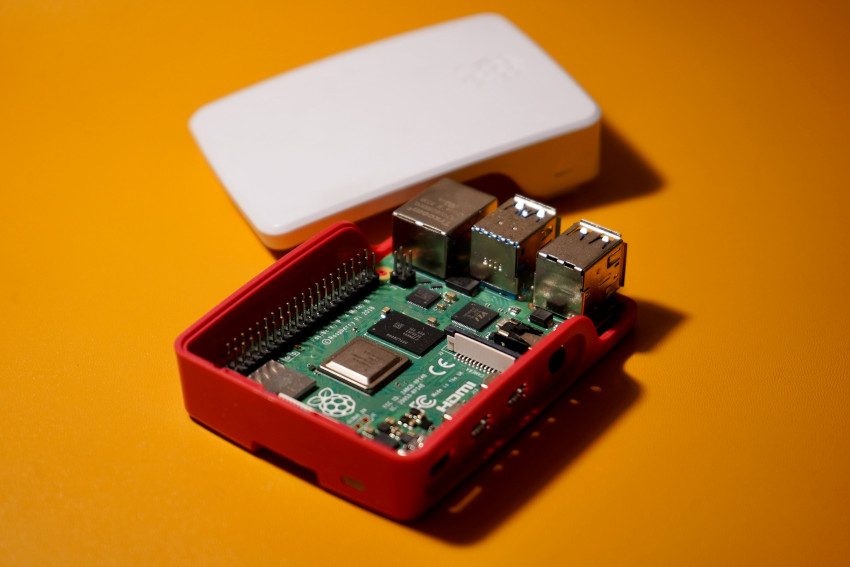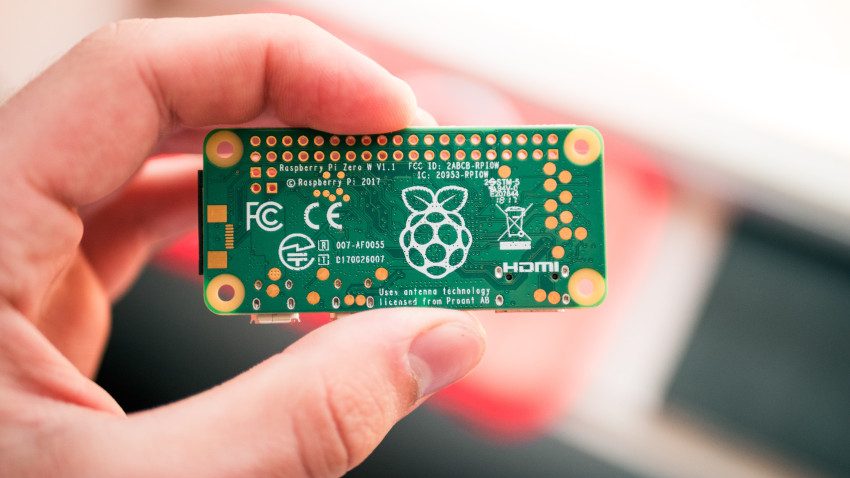Beginner’s Guide to Raspberry Pi Players for Digital Signage
The Raspberry Pi (RPi) is a tiny credit card-sized computer sold for as little as $4. It falls under the category of single-board computers such as Arduino and ODROID. As a single-board computer, it contains all the computer basics on a single board. This player has a CPU, RAM, USB ports, an Ethernet port, an HDMI port, and a graphics chip.

The Raspberry Pi name comes from incorporating fruit denominations by IT manufacturers. An excellent example of these denominations is Apple, Acorn, and Blackberry. In this sense, the “Pi” stands for “Python interpreter,” given that Python is the primary programming language.
If you don’t have Python experience, you may turn to Scratch when using Raspberry Pi since this is a more straightforward and visual computer programming language. This device was developed by the Raspberry Pi foundation for young individuals with a passion for web design. The reduced features make it suitable for beginners looking to learn more about the basics of programming languages and computer hardware structure. Now, Raspberry Pi has become a preferred device of digital signage players because of its affordable price and DIY capabilities.
Here is an overall beginner’s guide for potential customers, tech experts, or anyone exploring this device, to Raspberry Pi players, including its features, benefits, and overall management.
Features Used for Digital Signage
First, it’s important to know this player is only available as a board. You must acquire additional parts and assemble them to use your digital signage. The parts you will need to build a new computer include:
- The Raspberry Pi Board. Raspberry Pis that support digital signage are Models 3B and 3B+, Raspberry Pi 4B, and Raspberry Pi 400. Raspberry Pi Pico is suitable for LED digital signs in your store. You can purchase this player on Amazon.
- The Micro SD Card. It acts as the hard drive for your computer. A 32GB, class 10 micro SD Card will work well for digital signage. This way, your computer will transfer data faster. Additionally, if your Raspberry Pi board lacks an in-built SD card reader, you must purchase one.
- Power Adapter. Use a Raspberry Pi power supply, as other power supplies can cause problems for your computer. Use the type C power supply for Raspberry Pi 400 and Pi 4B. However, for all other Raspberry Pi versions, use a Micro USB power supply.
- Monitor and Its Cable. The monitor is any screen you will use to display images and videos. Use an HDMI cable to connect your display to the Raspberry Pi board.
- Keyboard and Mouse. They are used to perform input functions.
- An Ethernet Cable. You can either use a wired or wireless connection. Raspberry Pi 4 supports Gigabit Ethernet, where the jack connects to the motherboard.
There are Raspberry Pi kits that you will find in the market. They contain all or most of the components above. In some instances, the Micro SD card will come loaded with the operating system making your work easier. Therefore, before purchasing a kit, carefully read through the description to identify the components.
Benefits of Raspberry Pi Players
Many DIY engineers and young programmers prefer Raspberry Pis for the following reasons.
- User Friendly: Beginner programmers are pretty fond of Raspberry Pi as they use basic programming languages such as Python and Scratch. Besides, the Raspbian operating system uses the command line interface preferred by programmers.
- Cost-Effective. With as little as $4, you can have Raspberry Pi, which has all the primary functions of a computer. Raspberry Pis are suitable alternatives for businesses with tight budgets.
- Sustainable. Raspberry Pis are environmentally friendly, unlike large servers that release too much heat and require complex cooling systems. Moreover, it is easier to recycle Raspberry Pi boards.
- Versatile. Raspberry Pis are common among young engineers who consider it a DIY (do-it-yourself) computer. Users can easily experiment with them as they use them for various projects. For instance, to watch movies, print, create gaming systems or track cryptocurrency.
Apart from programming and other Raspberry Pi projects, you can use Raspberry Pi for digital signage. Besides, Raspberry Pi players have features that work well for digital signage. However, it would help if you understood how to install your Raspberry Pi for your digital signage. This beginner’s guide to Raspberry Pi Players guide will help you begin your digital signage journey.
Why Use Raspberry Pi 4B and 400 for Digital Signage?

Raspberry Pi 4B and Pi 400 are the best board options for digital signage. Similarly to the 3rd player, the Raspberry Pi 4 and Pi 400 have Wi-Fi and Bluetooth capabilities. Wi-Fi supports 2.4GHz and 5GHz bands, which you will use for your network’s connectivity.
Their boards have 40-pin general-purpose input/output (GPIO) headers, which allow the user to control the connected electronics from the Pi. The Raspberry Pi 4B offers the user four memory options 1GB, 2 GB, 4GB, and 8 GB. The 8GB memory is suitable for storing your digital signage content.
Both Raspberry Pi 4B and Raspberry Pi 400 have two HDMI ports that you can use with two monitors. However, you will need to find micro-HDMI cables for the two ports. Additionally, they support 4k resolution for both displays.
The 4B player has a 1.5GHz processor, while the 400 player has a 1,8GHz processor. Therefore, they work better for digital signage since you can process large data volumes seamlessly.
To overcome the overheating challenges in the 4B player, you can acquire the Raspberry Pi 4 model B. Raspberry Pi 4 model B has a heatsink case that cools the system. Use cases with ventilation spaces or add a cooling fan if you use the model 3 player.
Additionally, compared to desktops, Raspberry Pis are cheaper. Therefore, Raspberry Pis are suitable for quickly setting up your own business digital signage at minimal costs.
Software for Raspberry Pi
Initially, Raspberry Pis used a Linux-based Debian distro known as Raspbian as their operating system. However, in 2020 they launched the 64-bit operating system known as the Raspberry Pi OS. The Raspberry Pi OS can work with all Raspberry Pi models.
Your software for digital signage should be compatible with your Raspberry Pi operating system. The software should have the essential features necessary for digital signage.
- Content Management Options. These include compatibility with signage tools such as Google slides and Google Calendars. Templates that you can use when you need to keep your displays updated. User-friendly digital signage software that your employees can use easily.
- Display Control. The software should automatically turn off all displays during non-working hours.
- Remote Commands. The digital signage software should allow you to control the displays from your computer. You won’t have to input content on your display using USB drives physically.
Setting Up Your Digital Signage Player
Gareth HalfAcree publishes several player step-by-step guides. These guides are available on the Raspberry Pi Press Store site, where the latest book is The Official Raspberry Pi Beginner’s Guide 4th Edition. If you follow these step-by-step guides with the help of a few tutorials, setting up should be easy.
- Purchase micro SD cards that have pre-installed operating systems. If not, you first need to install NOOBS on your micro SD card. NOOBS is a New out of Box Software that aids in installing your operating system. So, ensure you select NOOBS which contains Raspbian, unlike NOOBS Lite.
- Once you install NOOBS on your micro SD card, insert the micro SD card into the Micro SD card slot on your Pi board. Then, set up all other parts of your device: the monitor, keyboard, mouse, display, and power supply.
- After you turn on your screen:
- Install the Raspbian OS.
- Once you have installed and configured Raspbian, install your digital signage software.
- Consider using Mvix Digital Signage Software, as it will work well with your player.
What Markets Can Utilize This Digital Signage Player
Raspberry Pi digital signage players are beneficial to various markets. For instance, gaming stores use Raspbian and RetroPie to reintroduce retro games in the gaming world. Alongside their gaming functionality, gaming stores can also use this player for digital signage.

Small business owners can use Raspberry Pi Pico for simple digital signs at their entrances. Moreover, schools, worship centers, museums, and factories can use these players for their displays. Hotels and hospitals can use Raspberry Pi 400 for digital signage in their waiting areas. Any market that requires small-scale digital signage can use this powerful digital signage device.
Raspberry Pi Players for Digital Signage
Add this player to your marketing and communication needs if you intend to build and use your digital signage for small-scale operations. These players are affordable, yet perform just as well as other high-quality players. Additionally, you can use them with your preferred content management software for efficient digital signage.
Lastly, they don’t consume much energy, saving you power. Raspberry Pi players would be excellent tools for using digital signage. Interested in getting started, discuss this guide with your digital signage provider and discover how Raspberry Pi players can maximize your communication.


